Selling pressure hit the stock market for the second week running as the major index ETFs lost ground. The Russell 2000 ETF (IWM) fell 2.27% last week, while the Nasdaq 100 ETF (QQQ) lost just 1.31%. Even though these are small losses in the grand scheme of things, the declines were enough to break short-term support levels and suggest that a correction is underway. Note that the Consumer Discretionary SPDR (XLY) led the offensive sectors with a 3.31% decline and showed relative weakness. The Utilities SPDR (XLU) led all sectors with a 4.09% weekly decline and continues to feel the heat of rising rates. Also note that the Real Estate iShares (IYR) fell over 6%. Gold and silver miners were the standout performers with double-digit gains. Gold is one of the few alternatives when both stocks and bonds decline. The 20+ Year T-Bond ETF (TLT) and S&P 500 ETF (SPY) are down around 10% the last two weeks. Gold is up around 5% as the only real alternative. Note that stocks and bonds have been negatively correlated most of the last two years, but these two have been falling together the last two weeks, which means correlation is turning positive. Weakness in both stocks and bonds creates uncertainty that benefits gold.


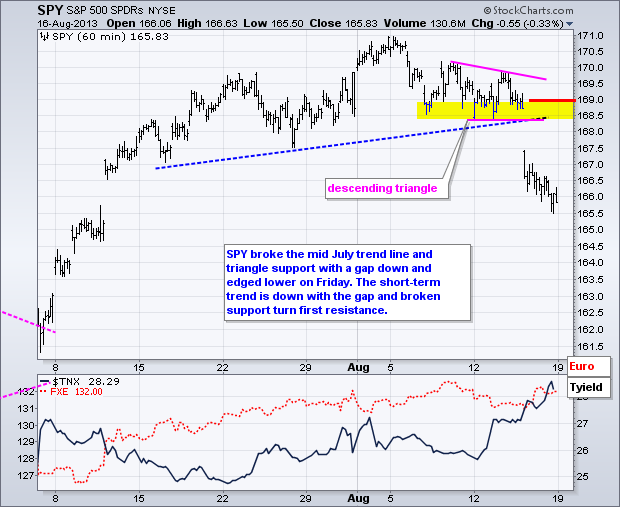
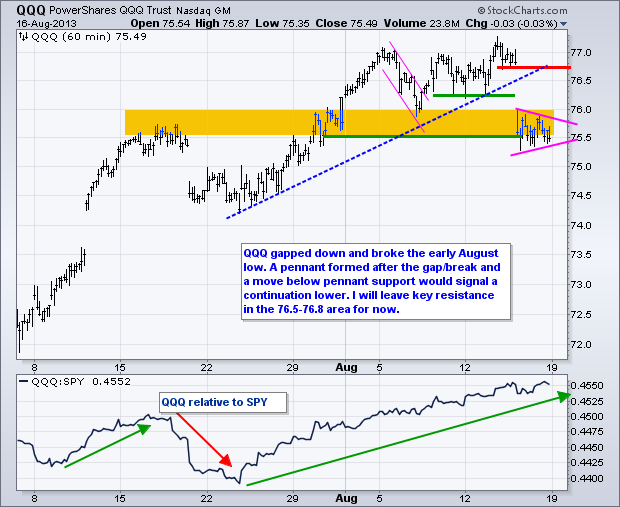
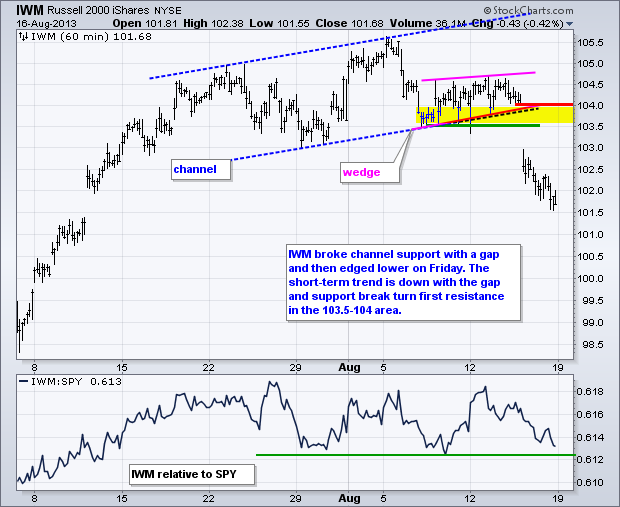
**************************************************************************
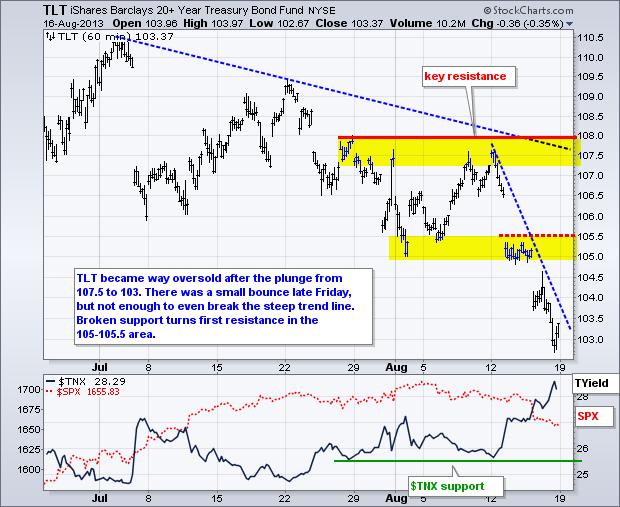
**************************************************************************
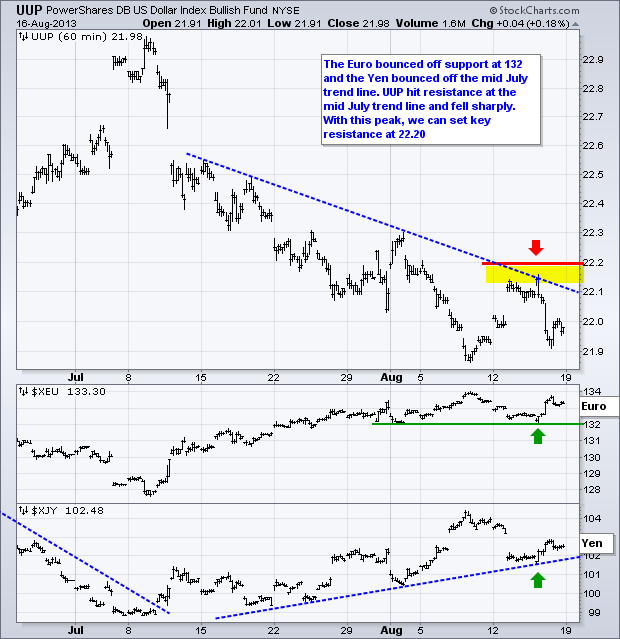
**************************************************************************
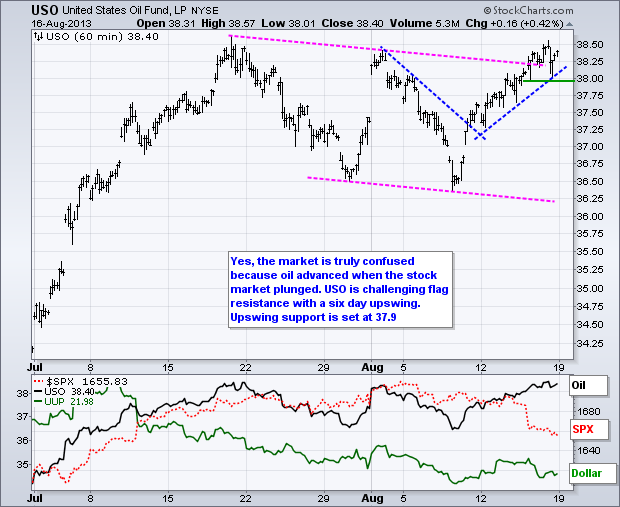
**************************************************************************
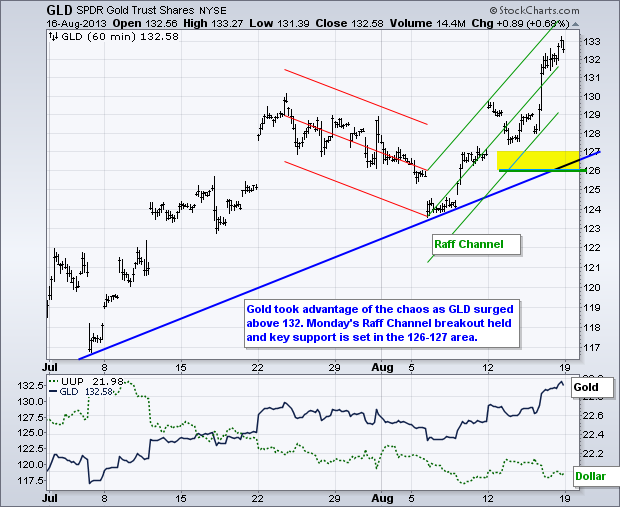
**************************************************************************
Key Reports and Events (all times Eastern):
Wed - Aug 21 - 07:00 - MBA Mortgage Index
Wed - Aug 21 - 10:00 - Existing Home Sales
Wed - Aug 21 - 10:30 - Crude Inventories
Wed - Aug 21 - 14:00 - FOMC Minutes
Thu - Aug 22 - 08:30 - Initial Claims
Thu - Aug 22 - 10:00 - Leading Indicators
Thu - Aug 22 - 10:30 - Natural Gas Inventories
Fri - Aug 23 - 10:00 - New Home Sales
Charts of Interest: Tuesday and Thursday
This commentary and charts-of-interest are designed to stimulate thinking. This analysis is
not a recommendation to buy, sell, hold or sell short any security (stock ETF or otherwise).
We all need to think for ourselves when it comes to trading our own accounts. First, it is
the only way to really learn. Second, we are the only ones responsible for our decisions.
Think of these charts as food for further analysis. Before making a trade, it is important
to have a plan. Plan the trade and trade the plan. Among other things, this includes setting
a trigger level, a target area and a stop-loss level. It is also important to plan for three
possible price movements: advance, decline or sideways. Have a plan for all three scenarios
BEFORE making the trade. Consider possible holding times. And finally, look at overall market
conditions and sector/industry performance.

About the author:
Arthur Hill, CMT, is the Chief Technical Strategist at TrendInvestorPro.com. Focusing predominantly on US equities and ETFs, his systematic approach of identifying trend, finding signals within the trend, and setting key price levels has made him an esteemed market technician. Arthur has written articles for numerous financial publications including Barrons and Stocks & Commodities Magazine. In addition to his Chartered Market Technician (CMT) designation, he holds an MBA from the Cass Business School at City University in London.
Learn More





